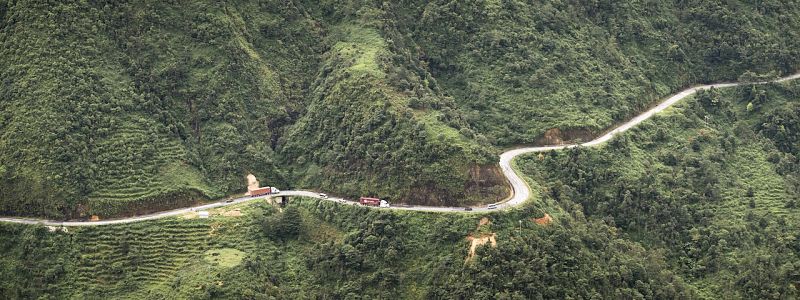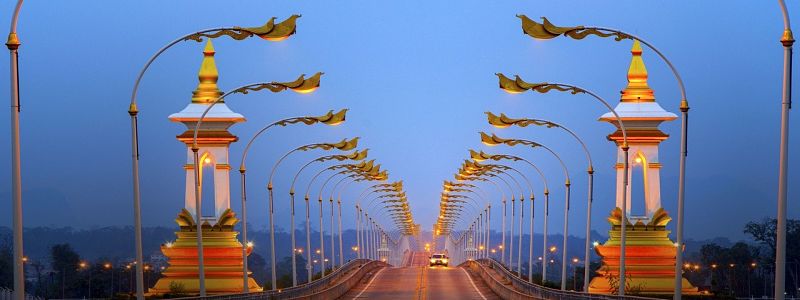
The Laos-Vietnam border is an important juncture between two distinguished Southeast Asian nations. If you decide to explore more than 1 country in the region in just one trip, it’s critical you learn about the protocols for crossing between them.
Local flights are inexpensive. But if you have enough time, crossing Laos land borders is a better way to get to see more of both Laos and Vietnam.
Laos and Vietnam share 2,161 km (1,343 miles) of border, with several crossing points. In this article, we outline how to cross the border between Laos and Vietnam, including the documents you need, and the exact location of entry points.
Do You Need a Separate Visa to Go from Vietnam to Laos?
Yes, Vietnam and Laos are separate, sovereign states. This means that they have their own visa policy and rules.
If you already have a visa for Vietnam, you’ll also need to obtain a Laotian travel authorization before you can enter Laos from Vietnam. The majority of foreign nationals need a valid visa to be allowed into the country.
The easiest and quickest way to get a visa for Laos is to apply online for the eVisa. Since it is granted within a few days or even hours, the electronic visa allows for greater flexibility.
If you include Laos in your itinerary at the last moment, you can fill out the application in just a few minutes while you are already in Vietnam.
Can you get a visa on arrival for Laos at the border with Vietnam?
Laos allows some foreign citizens the possibility to apply for a Laotian visa on arrival directly at the border. However, please note that the visa on arrival is only available to some nationalities.
Moreover, the visa on arrival is not offered at all entry points. For example, it is not possible to obtain a visa on arrival at the Napao-Chalo Vietnam border crossing.
To get a permit on arrival, you must make sure to choose an eligible crossing point. You also need to carry all the required documents for the visa on arrival application (including the exact visa fee in cash).
If you have an approved Laos eVisa, on the other hand, the process is simpler. You normally only have to carry the visa itself and your passport (the same one you used to apply for the visa).
However, please note that further documentation may be required by the Laotian border authorities (depending on your specific circumstances).
How Do I Get from Vietnam to Laos?
Stretching over 2 thousand kilometers, the Laos-Vietnam border has 7 land points for crossing from Vietnam to Laos and vice versa:
- Sop Hun (Laos) – Tay Trang (Vietnam)
- Na Maew (Laos) – Nậm Xôi (Vietnam)
- Nam Can (Laos) – Nam Khan (Vietnam)
- Nam Phao (Laos) – Cau Treo (Vietnam)
- Dansavanh (Laos) – Lao Bảo (Vietnam)
- Bo Y (Laos) – Ngoc Hoi (Vietnam)
- Cha Lo (Laos) – Napao (Vietnam)
Normally, Vietnamese citizens, Laotian nationals, and international visitors alike can use these points. However, eligibility to cross may depend on the type of visa or other travel authorization you have.
Moreover, temporary closures may occur. Please check the availability of the land crossing before traveling.
Flying from Vietnam to Laos
The quickest way to go from Vietnam to Laos is by plane. There are regular direct flights between main cities. In particular, the most popular air routes land in Luang Prabang and Vientiane.
A flight from Hanoi to Luang Prabang or Vientiane takes about 1 hour 30 minutes.
The cheapest way to go from Vietnam to Laos
If you are on a tight budget and do not mind long trips, you can move between Vietnam and Laos by bus or train. This can cost less than $60 depending on the route.
However, it may not be possible to find a direct bus or train for your desired destination. Depending on the route, the trip could take longer than 1 day.
Laos-Vietnam Border Crossing: History
The border between Vietnam and Laos starts at the meeting point with China, in the north of Laos. It follows the Annamite mountain range, which historically created a natural barrier between the Vietnamese kingdoms in the east and the Lao, Thai, and Khmer kingdoms in the west.
In the 19th century, France established its control over both Vietnam and Laos in the form of the French Indochina colony.
It was during the French colonial periodthat the foundations of the modern Laos-Vietnam border crossing map were decided. A dispute in 1916 led to the creation of the French maps.
Laos became fully independent from French control in 1953 while Vietnam obtained independence the following year. During the Vietnam war, Laos neighbored both North and South Vietnam and the border was heavily bombed by the U.S. military to prevent the Viet Cong from using it.
A border treaty was signed in 1976, at the end of the war, and was based on the colonial-era border. Minor modifications to the 1976 line were made in the following years.


